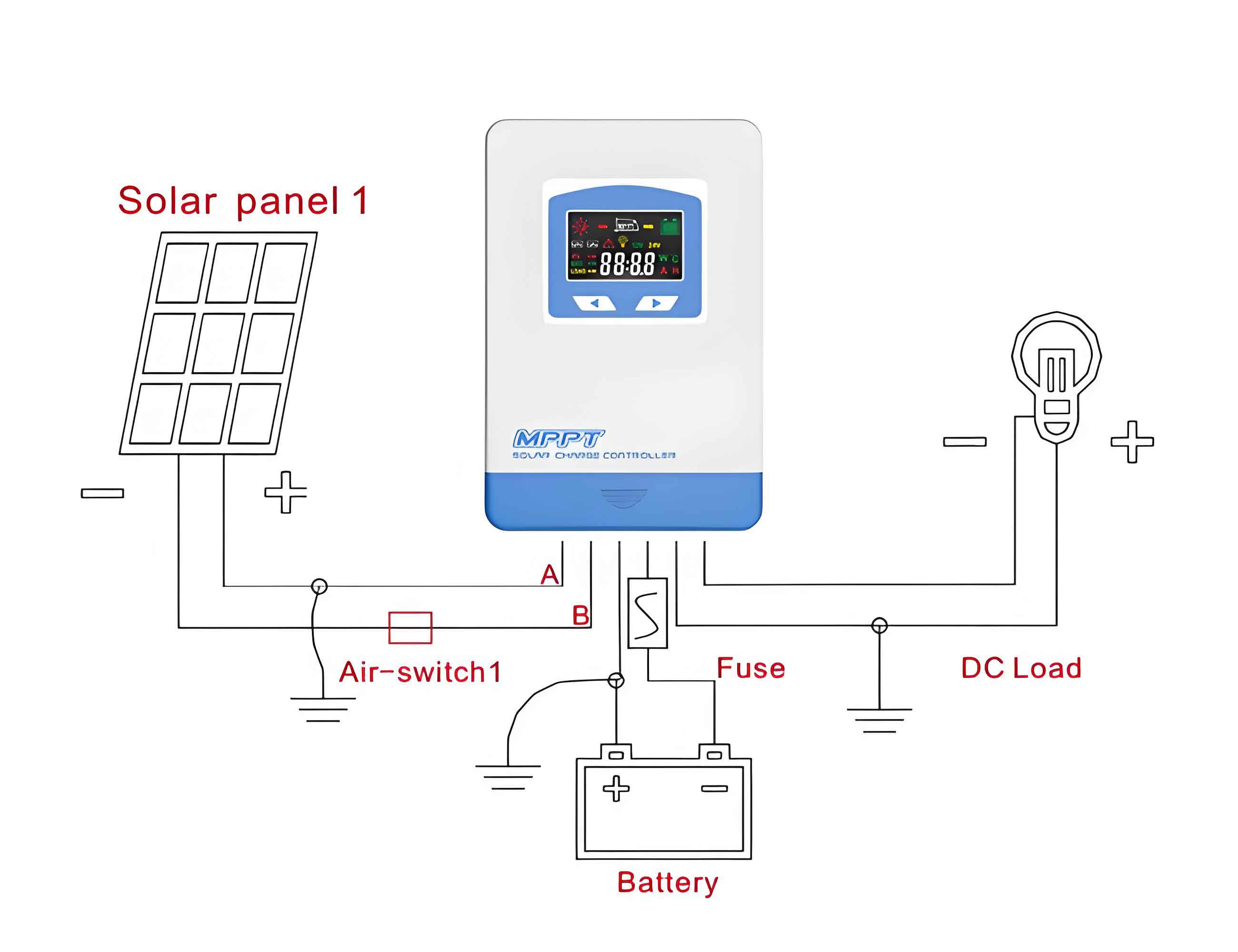Abstract
This study investigates the circuit modeling of thermoelectric power arrays and proposes an enhanced maximum power point tracking (MPPT) strategy to address challenges arising from temperature-induced parameter mismatches. A refined thermoelectric generator (TEG) array model is developed by incorporating temperature-dependent internal resistance and internal thermal gradient effects. The model accounts for parasitic thermal resistances and nonlinear interactions between Seebeck voltage, Joule heating, and Peltier effects. A hybrid MPPT algorithm combining particle swarm optimization (PSO) and perturb-and-observe (P&O) methods is introduced to resolve multi-peak power-voltage characteristics caused by temperature and parameter mismatches. Simulation and experimental validations confirm the accuracy of the proposed model and the superior performance of the hybrid MPPT strategy in maximizing power extraction under non-uniform thermal conditions.

Introduction
Thermoelectric power generation has gained prominence as a sustainable energy solution due to its ability to convert waste heat into electricity. However, practical deployment of thermoelectric arrays faces challenges such as temperature-dependent parameter variations, non-uniform thermal gradients, and multi-peak power-voltage characteristics. Traditional MPPT methods like P&O and incremental conductance often fail to track global maxima under these conditions. This work addresses these limitations by:
- Deriving a high-fidelity TEG array circuit model that integrates temperature effects on internal resistance and thermal gradients.
- Proposing a hybrid PSO-P&O MPPT algorithm to efficiently navigate multi-peak power curves.
The proposed framework enhances power extraction efficiency and robustness in real-world scenarios.
Thermoelectric Power Array Modeling
1. Single-Module Circuit Model
A TEG module’s electrical behavior is governed by the Seebeck effect, where a temperature difference (ΔT) across semiconductor junctions generates a voltage. The traditional Thévenin equivalent model (Fig. 2a) oversimplifies the system by neglecting parasitic thermal resistances and load-dependent temperature variations. A revised model (Fig. 2b) incorporates:
- Effective Seebeck Voltage:
Voc=αTEGΔTint
where αTEG is the effective Seebeck coefficient, and ΔTint is the internal temperature difference. - Temperature-Dependent Internal Resistance:
RTEG=Rm+2km+kcαm2(TH+TC)
Here, Rm, km, and kc represent the module’s electrical resistance, thermal conductance of semiconductor materials, and parasitic thermal conductance, respectively.
2. Internal Thermal Gradient Analysis
The internal temperature difference ΔTint is attenuated by parasitic thermal resistances (θH, θC) and load current effects:
ΔTint=2km+kckc(TH−TC)−2km+kcαm(TH+TC)I
This equation highlights the linear relationship between ΔTint and load current I, critical for accurate power prediction.
3. Array-Level Modeling
For an array of ns series-connected and np parallel-connected modules, the aggregate output voltage and resistance are:
Varray=nsαTEGΔTint−InpnsRTEG
Rarray=npnsRTEG
Non-uniform thermal conditions across modules introduce mismatches, leading to multi-peak power curves.
Multi-Peak Characteristics and MPPT Challenges
Under temperature or parameter mismatches, the array’s power-voltage (P–V) curve exhibits multiple local maxima (Fig. 7). Traditional MPPT methods fail to distinguish between local and global peaks, resulting in suboptimal power extraction.
Key Causes of Multi-Peak Behavior:
- Thermal Mismatches: Variations in TH or TC across modules.
- Parameter Variations: Manufacturing tolerances in αTEG and RTEG.
Hybrid PSO-P&O MPPT Algorithm
1. Algorithm Design
The hybrid strategy combines the global search capability of PSO with the local precision of P&O:
- PSO Phase: Explores the search space to identify potential global maxima.
- Velocity update:
vit+1=ωvit+c1r1(pbest−xit)+c2r2(gbest−xit) - Position update:
xit+1=xit+vit+1
- Velocity update:
- P&O Phase: Fine-tunes the operating point near the identified maximum.
- Voltage perturbation:
ΔD=±δ⋅sign(ΔP/ΔV)
- Voltage perturbation:
2. Mode Switching Logic
The algorithm switches between PSO and P&O based on voltage perturbation magnitude:
If ∣Vk−Vk−1∣>Uth:Activate PSO
\text{Else}: \text{Activate P&O}
where Uth=0.75VMPP is the threshold for mode transition.
3. Parameter Configuration
| Parameter | Value | Description |
|---|---|---|
| Swarm size | 4 | Number of particles |
| c1, c2 | 2.0 | Learning factors |
| ω | 0.6 | Inertia weight |
| P&O step size | 0.01 | Voltage perturbation magnitude |
Simulation and Experimental Validation
1. Model Accuracy
Experimental data from a 50-module array (SP1848-27145 TEGs) under ΔT=30∘C validates the proposed model:
| Metric | Average Error | Maximum Error | Variance |
|---|---|---|---|
| Voltage (V) | 0.0042 V | 0.02 V | 1.1×10−4 |
| Current (I) | 0.011 A | 0.3 A | 0.01 |
| Power (P) | 0.95 W | 2 W | 3.9 |
2. MPPT Performance Comparison
The hybrid PSO-P&O algorithm outperforms standalone PSO and P&O:
| Algorithm | Avg. Power (W) | Convergence Time (s) | Oscillation Amplitude |
|---|---|---|---|
| PSO-P&O | 98.7 | 1.2 | < 1% |
| PSO | 95.4 | 3.8 | 5% |
| P&O | 89.2 | 2.1 | 8% |
3. Multi-Peak Tracking Example
For a 2×2 array with TH=[30∘C,30∘C,80∘C,90∘C], the hybrid algorithm achieves 96% global MPPT efficiency, compared to 72% for P&O.
Discussion
- Model Robustness: The derived circuit model reduces voltage prediction errors to <1%, enabling precise MPPT control.
- Algorithm Efficiency: The hybrid approach reduces convergence time by 45% compared to standalone PSO, while eliminating steady-state oscillations inherent to P&O.
- Scalability: The framework is adaptable to larger arrays, though computational load increases linearly with swarm size.
Conclusion
This work presents a comprehensive thermoelectric power array modeling and MPPT strategy to address real-world challenges in temperature-varying environments. The proposed hybrid PSO-P&O algorithm effectively navigates multi-peak power curves, achieving faster convergence and higher power extraction than conventional methods. Future research will focus on hardware-in-the-loop implementations and adaptive parameter tuning for dynamic thermal conditions.
